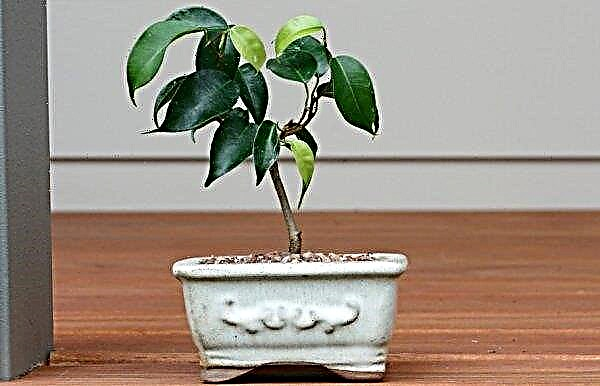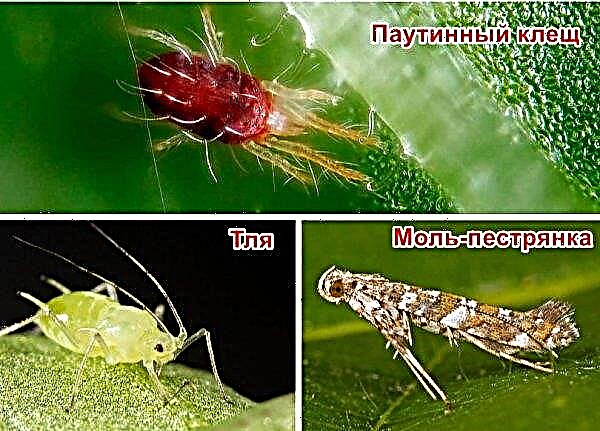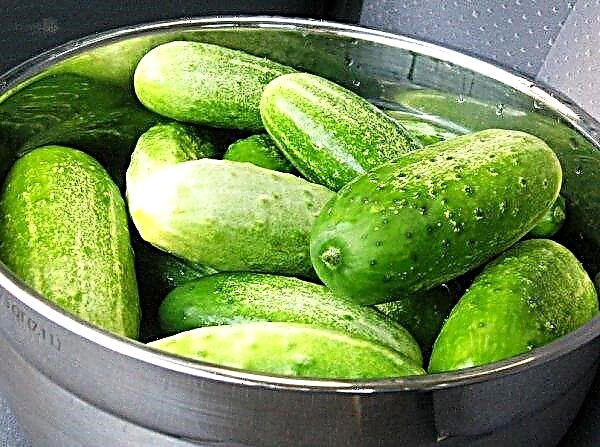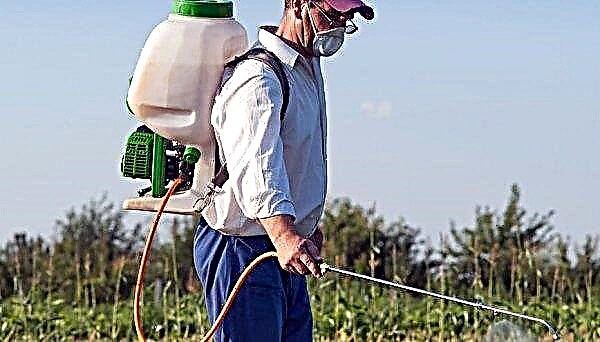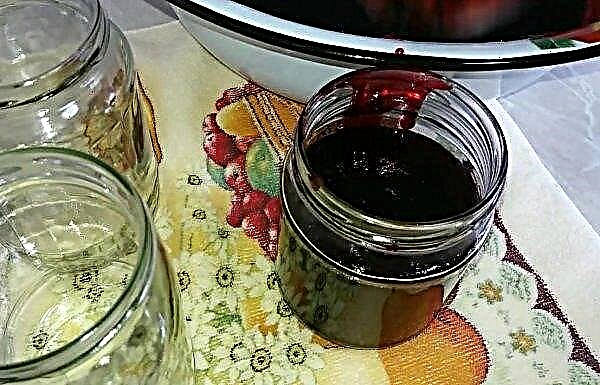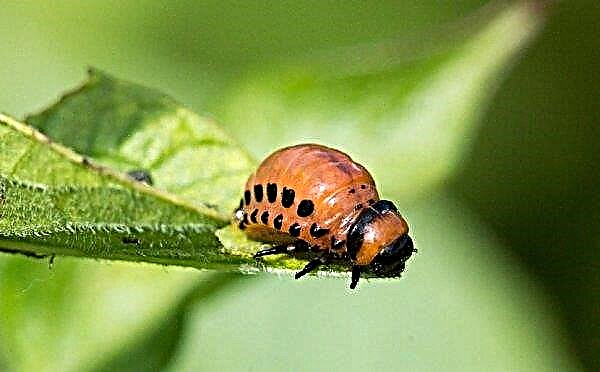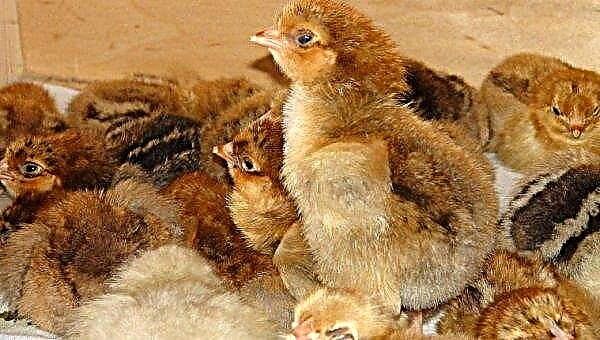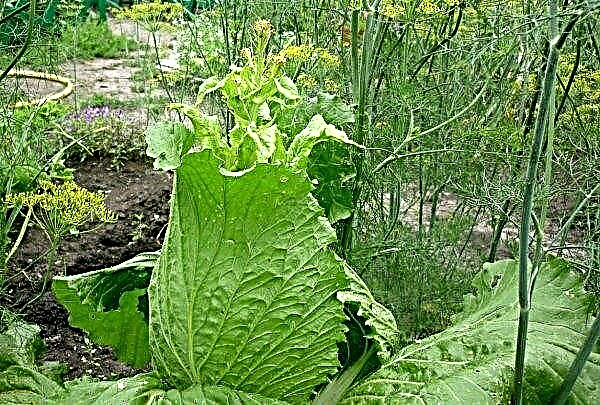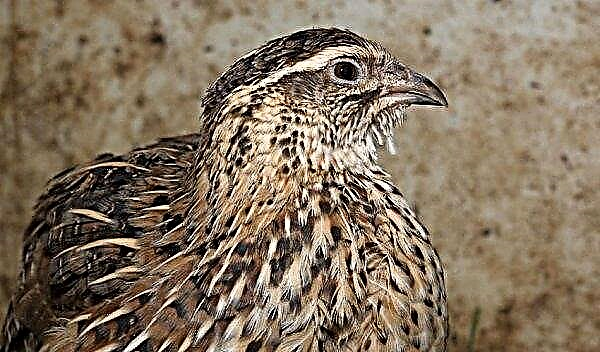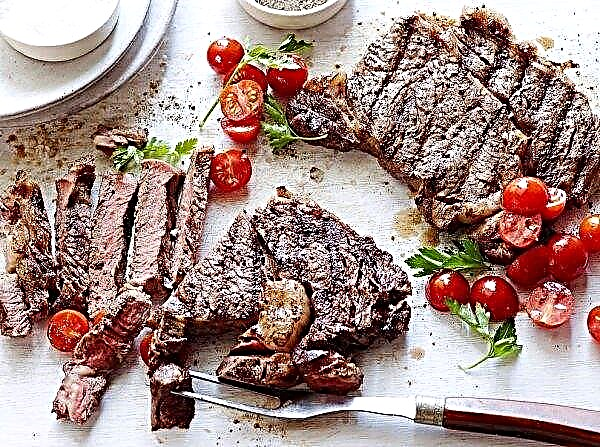Highly decorative evergreen Chinese juniper Strikta Variegata with an amazing coniferous aroma is one of the most beloved and successful plants used in the field of landscape design. It does not impose high requirements on the composition of the soil, has excellent winter hardiness and is well adapted to urban conditions. What else are the advantages of the described culture, and what agricultural rules must be observed when planting it? Learn from the article.
Botanical Description
Chinese juniper Stricta Variegata is an evergreen perennial culture of the dwarf form of the Cypress family, which is the result of breeding work by Dutch geneticists. A variety of the described perennial in the second half of the twentieth century was developed. The plant is characterized by small compact size, slow growth rate, at 10 years of age reaches a height of 2-3 m and up to 1.5 m in diameter.
The plant is characterized by small compact size, slow growth rate, at 10 years of age reaches a height of 2-3 m and up to 1.5 m in diameter.
The shrub has a symmetrical dense crown of a conical shape, represented by a combination of straight, thin, fairly stiff shoots growing in a vertical direction relative to the trunk. The needles of the plant are thin, prickly, but at the same time, quite soft. In a warm period of time, it has a greenish-bluish color, in winter it becomes gray-blue. Grade feature
Did you know? In ancient times, dishes were made from juniper wood. In such containers, even in the heat, milk did not turn sour, it remained sweet and fresh.
Stricta Variegata is the presence of shoots with a white-and-white color, arranged in a chaotic manner, which gives the perennial decorative and uniqueness. In the period from August to October, small inedible fruits form on the shrub - dark blue cone berries, with a diameter of about 0.8 cm, on the surface of which a white waxy coating forms. Inside the fruit there are 3 small seeds.
Characteristic
Juniper from China stricta is appreciated by gardeners for their lack of capriciousness in cultivation, undemanding to soil and humidity, and the ability to adapt to the gassed air of the city.
The variety has the following characteristics:
| Crown shape | Conical, dense, thick |
| Dimensions | The height of an adult plant rarely exceeds 2-3 m, in diameter 1.5 m |
| Rates of growth | Slow, annual growth in height up to 10-15 cm, width up to 5 cm |
| Root system | Very strong, powerful, branched, can be used to strengthen erosion soils |
| Features | The plant does not make high demands on the place of planting, is able to grow on soils with low moisture levels, does not suffer from gas pollution |
| Frost resistance | High, which allows you to grow plants almost throughout the Russian Federation |

One of the advantages of a plant is its ability to purify air, inhibit the growth and reproduction of pathogens. A similar characteristic of the culture is often used for therapeutic and prophylactic purposes. The air enriched with phytoncides secreted by the tree has a beneficial effect on the human nervous system, respiratory organs, and contributes to the rapid recovery of the body after suffering lung diseases.
Important! Juniper needles contain a small percentage of toxic substances, so with prolonged contact with the skin in some cases, allergic reactions can be observed.
Use in landscape design
In the field of landscape design, juniper of the described variety is considered one of the most popular and popular. It is ideal for creating compositions in Chinese or Japanese style. Due to the fact that the shrub responds well to shearing and shaping, it is often used to form “live” fences, landscaping terraces, balconies and gravestones.
Strikta Variegata looks no less beautiful as a part of rockeries, alpine hills, rocky gardens. It is combined with heather crops, used to decorate personal plots, city malls and parks. Perennials can often be seen in tapeworm planting or in a variety of group plantings.
How to plant juniper
As already noted, juniper is not too picky about the place, soil composition and climatic conditions of the region. However, in order to grow a decorative, aesthetically attractive shrub, it is recommended to observe some basic rules when planting it.
Site preparation
Stricta prefers to grow in well-lit sunny places or in small partial shade. It should be noted that the needles of a young plant are quite sensitive to direct sunlight, so seedlings must be shaded. Optimal for the plant is light, nutritious, air- and moisture-permeable soil with a neutral or weak acidity level.
However, the culture can tolerate dry, calcareous and sandy soil normally. It is important to ensure that the site is protected from drafts and cold winds, which negatively affect the condition of the bush and can provoke the development of fungal ailments.
Recommendations for choosing seedlings
Specialists recommend purchasing seedlings in special nurseries or specialized markets.
When choosing planting material, you need to pay attention to such aspects:
- plants with a closed root system or seedlings in containers should be preferred;
- the material must have young shoots;
- juniper branches should be resilient, fresh, without signs of dryness and brittleness;
- the crown of the bush should be saturated bright color, without dry areas, signs of disease or parasites.
 A seedling that is located in the container, during planting, takes root much better, takes root and adapts to a new place much faster.
A seedling that is located in the container, during planting, takes root much better, takes root and adapts to a new place much faster.Landing rules
Planting is allowed in the springtime - in April, when the probability of night frost returning disappears, or in autumn - in October, a few weeks before the expected cold weather.
Important! Planting a seedling with open roots must be carried out immediately after purchase.
Planting technology is simple and is based on the following steps:
- Dig a recess 2-3 times the size of the root system.
- Cover the bottom of the pit with a 20-cm layer of drainage made of expanded clay or pebbles.
- Mix part of the seized land in equal proportions with peat and add to the mixture a complex mineral preparation intended for conifers.
- Top off the drainage layer with a layer of fertile soil.
- Lay the seedling in the pit, fill it with soil so that the neck of the root remains on the surface.
- Tamp the soil lightly with your hands, water the seedlings abundantly with settled non-cold water.
- Cover the trunk circle with a layer of mulch from the bark or slivers.

If the plant is located in a sunny place, then it is recommended to cover it from the sun in the first weeks. When planting several specimens, an interval of 0.5 to 2 m should be maintained between them, depending on the size of the seedlings.
Outdoor Care
It’s easy to take care of juniper in open ground. The plant responds well to basic agricultural practices, such as watering, top dressing, pruning, however, the procedure must be carried out regularly.
Watering and fertilizer
Stricta Variegata cultivar does not have special requirements for soil moisture, is able to tolerate short-term drought normally. But in order for the bush to maintain high aesthetic qualities, in the hot summer period it should be watered 2-3 times a week, using at least 30 liters of water. In addition, good hydration should be organized for the plant within a few weeks after planting.
In this case, watering is carried out, focusing on the drying of the upper soil layer. After irrigation procedures, it is ideal to carry out soil loosening, which allows you to enrich the soil with oxygen and nutrients, thereby activating the growth of the root system. But dry air can be detrimental to the plant, so experts advise regularly spraying the crown. Activities should be carried out in the morning or in the evening to avoid burns of needles.
As for feeding shrubs, it is advisable to do it once during the growing season. In spring, it’s best in late April or early May, Junipers are fed with complex mineral preparations specially designed for coniferous crops.
Formation
The Chinese perennial responds well to the haircut, which is regularly carried out in landscape planting, giving the plant the desired shape. Besides, every spring it is advisable to carry out sanitary pruning, removing dry, sick, too thin or broken shoots after winter.
When pruning, experts do not advise removing more than a third of the branches, otherwise the probability of infection of the plant due to the weakening of its immunity is high. After the event, the crown should be sprayed with fungicidal solutions to prevent the development of fungal ailments.
Wintering
Juniper of the described variety is characterized by excellent resistance to frost, however, when grown in harsh cold climatic conditions, it must be prepared for wintering.
For this:
- in autumn, the trunk circle is covered with a layer of natural mulch, for example, peat;
- young seedlings are completely covered with spruce branches;
- the branches of adult plants are carefully tied to the trunk so as not to damage, covered with any "breathing" material, for example, burlap or agrofibre.
 In the spring, approximately in the month of April, the shelter can be removed. To do this, it is recommended to choose a cloudy day so that the shrub can adapt to sunlight.
In the spring, approximately in the month of April, the shelter can be removed. To do this, it is recommended to choose a cloudy day so that the shrub can adapt to sunlight.
Diseases and Pests
Most often, Chinese juniper is affected by fungal diseases, which can be caused by adverse climate conditions or poor care. Perennial is able to become a “victim” of more than 40 species of fungi that infect the roots of the plant, which subsequently affects shoots, needles.
Did you know? Surprisingly, the natural juniper thickets are localized near coal seams. This property is used by geologists to search for coal deposits. That is how the coal basin was opened in the suburbs.
Common signs of fungal damage are:
- yellowing and further decay of needles;
- yellowing and drying out of shoots;
- the appearance on the needles and shoots of spots of various colors: brown, dark, yellow.
The most common diseases of juniper are fusarium, brown shute, rust. In case of perennial infection, all diseased parts should be carefully cut and destroyed. Trees need to be sprayed with fungicidal preparations, for example, Fundazolom.
Of the pests, the greatest harm to the culture is delivered by: sawfly, needle tick, aphid. Pests feed on the sap of the plant, due to which it gradually fades, shoots and needles dry out. An effective method of controlling parasites is the spraying of bushes with insecticides of a wide spectrum of action, for example, Aktara or Aktellik.
To prevent the development of fungal diseases and the appearance of insect pests preventative treatment of trees with insecticides and fungicides.
Breeding methods
For cultivation of juniper cultivar Stricta Variegata use the method of cuttings or propagation by layering. It is almost impossible to grow a plant by the seed method at home. Such technology of reproduction is only possible for professional gardeners and breeders. When the cuttings take root, they are planted in the ground.
When breeding cuttings:
- in spring, one-year-old shoots are cut from the bush from the trunk;
- cuttings are planted in a mixture consisting of equal parts of sand and peat;
- the container with seedlings is covered with a plastic film to create a greenhouse effect;
- Landings provide regular ventilation and watering.

Juniper is perfectly propagated by layering: branches that spread along the ground are laid in previously made indentations filled with a sand-peat mixture, sprinkled with soil, pinch the top. Roots thus rooted become full-fledged individual plants.
Juniper Chinese Stricta Variegata is not by chance a "favorite" in the field of landscape design. The plant’s negligence, high aesthetic qualities, and the ability to adapt to environmental conditions make it possible to use it to create a wide variety of original compositions in small garden plots or in large city parks.

